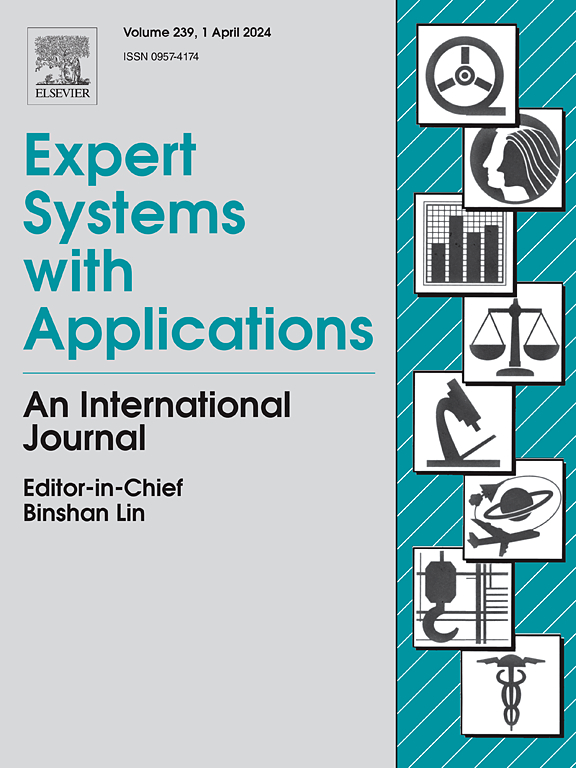基于类激活图的切分-合并和对比学习:记录级心房颤动检测的新策略
IF 7.5
1区 计算机科学
Q1 COMPUTER SCIENCE, ARTIFICIAL INTELLIGENCE
引用次数: 0
摘要
背景基于深度学习的心房颤动(AF)检测模型需要大量的训练数据,而这往往需要劳动密集型的专业注释。虽然数据扩增技术已被用于缓解心电图(ECG)注释数据稀缺的问题,但目前还缺乏针对记录级心电图注释的特定扩增方法。我们提出了一种新颖的策略,将基于类激活图的切片-合并(CAM-SC)数据增强和对比学习相结合,以应对当前的挑战。首先,对包含全局平均汇集层的基线模型进行分类训练,并生成类激活图(CAM),突出指示性心电图片段。然后,在每个记录中,对指示性和非指示性片段进行切片。随后,根据 QRS 波群的起始和终止 Q 点随机连接这些片段,并保留指示性片段以保持标签的正确性。结果使用 ResNet-101 作为基线模型,在 2017 年心脏病学计算(CinC)挑战赛数据集(一个具有记录级注释的典型房颤数据集)上,使用增强数据进行训练获得了最高的 F1 分数 0.861。结论 本研究介绍了一种专门针对记录级心电图注释的创新数据增强方法,显著增强了使用深度学习模型的房颤检测能力。这种方法对未来的房颤检测研究具有重大意义。本文章由计算机程序翻译,如有差异,请以英文原文为准。
Class activation map-based slicing-concatenation and contrastive learning: A novel strategy for record-level atrial fibrillation detection
Background
Deep learning-based models for atrial fibrillation (AF) detection require extensive training data, which often necessitates labor-intensive professional annotation. While data augmentation techniques have been employed to mitigate the scarcity of annotated electrocardiogram (ECG) data, specific augmentation methods tailored for recording-level ECG annotations are lacking. This gap hampers the development of robust deep learning models for AF detection.
Methods
We propose a novel strategy, a combination of Class Activation Map-based Slicing-Concatenation (CAM-SC) data augmentation and contrastive learning, to address the current challenges. Initially, a baseline model incorporating a global average pooling layer is trained for classification and to generate class activation maps (CAMs), which highlight indicative ECG segments. After that, in each recording, indicative and non-indicative segments are sliced. These segments are subsequently concatenated randomly based on starting and ending Q points of QRS complexes, with indicative segments preserved to maintain label correctness. Finally, the augmented dataset undergoes contrastive learning to learn general representations, thereby enhancing AF detection performance.
Results
Using ResNet-101 as the baseline model, training with the augmented data yielded the highest F1-score of 0.861 on the Computing in Cardiology (CinC) Challenge 2017 dataset, a typical AF dataset with recording-level annotations. The metrics outperform most previous studies.
Conclusions
This study introduces an innovative data augmentation method specifically designed for recording-level ECG annotations, significantly enhancing AF detection using deep learning models. This approach has substantial implications for future AF detection research.
求助全文
通过发布文献求助,成功后即可免费获取论文全文。
去求助
来源期刊

Expert Systems with Applications
工程技术-工程:电子与电气
CiteScore
13.80
自引率
10.60%
发文量
2045
审稿时长
8.7 months
期刊介绍:
Expert Systems With Applications is an international journal dedicated to the exchange of information on expert and intelligent systems used globally in industry, government, and universities. The journal emphasizes original papers covering the design, development, testing, implementation, and management of these systems, offering practical guidelines. It spans various sectors such as finance, engineering, marketing, law, project management, information management, medicine, and more. The journal also welcomes papers on multi-agent systems, knowledge management, neural networks, knowledge discovery, data mining, and other related areas, excluding applications to military/defense systems.
 求助内容:
求助内容: 应助结果提醒方式:
应助结果提醒方式:


